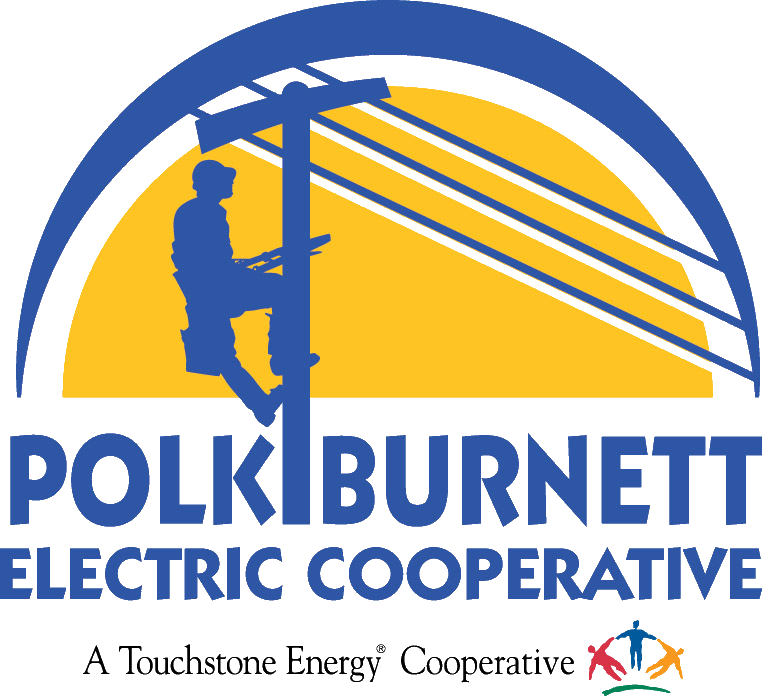

by General Manager Steve Stroshane (left) and Board President Ed Gullickson (right)
The energy industry continues to transform and Dairyland Power Cooperative, our wholesale power cooperative, is focused on diversifying energy resources and modernizing systems to ensure safe, reliable power at a competitive rate. We’d like to share Dairyland’s plans to be future ready and serve members for generations to come.
Sustainable Generation and Resource Diversification
Dairyland is preparing for the transformation of energy resources by strategically developing power supply plans, determining future energy mix and anticipating members’ long-term needs. Their board has set goals to continue to diversify Dairyland’s energy portfolio, reduce its carbon footprint and be even more sustainable. As resource decisions are made, four criteria for sustainability are balanced: economics, environment, social and technical considerations.
Retiring Genoa Station #3
A major component of Dairyland's Sustainable Generation Plan has been evaluating how long it should continue to operate existing assets. In January, the difficult decision was made to retire the 345 MW coal-fired Genoa Station #3 when the contracted fuel supply is depleted. The estimated retirement is June–December 2021. Many factors were considered when making this decision. These include impacts on employees and communities, age of the facility, system capacity requirements, regulatory requirements, projected maintenance needs and costs, fuel supply, overall cost of power production and regional market prices for energy.
Renewable Energy Investments
Dairyland announced two major renewable energy investments in 2019: an agreement to purchase power from the 149 MW Badger State Solar facility in Wisconsin and the proposed 52 MW Tatanka Ridge Wind energy facility in South Dakota. Other recent additions to Dairyland’s renewable energy portfolio include power-purchase agreements with the 98 MW Quilt Block Wind Farm in Wisconsin and the 80 MW Barton Wind Farm in Iowa.
Local Solar
Eighteen new solar energy facilities are online across the Dairyland system, including SunTuria Solar right here at Polk-Burnett in Centuria. SunTuria Solar was dedicated November 3, 2017. The 1.25 MW array is the first utility-scale solar in Polk and Burnett counties. ENGIE North America owns and operates the array. Polk-Burnett and Dairyland Power Cooperative purchase the energy output. This project provides clean solar power to help meet the energy demands of Wisconsin and our local co-op membership. You can track solar energy output on polkburnett.com.
Nemadji Trail Natural Gas Plant
The proposed Nemadji Trail Energy Center, a natural gas facility in Superior, is integral to Dairyland’s Sustainable Generation Plan. If approved, it will serve as the power behind the power, providing reliable and competitively priced power when the wind isn’t blowing and the sun isn’t shining. Nemadji Trail Energy Center was approved in January by the Public Service Commission of Wisconsin. Additional approvals and permits are required from the City of Superior, the Wisconsin Department of Natural Resources and the U.S. Army Corps of Engineers. It is scheduled to be in service by 2025, contingent on regulatory approvals.
As Polk-Burnett and Dairyland transition to a low-carbon future, safety, reliability and competitiveness will remain at the forefront. Since our beginning, we’ve been focused on improving our local quality of life, and this commitment continues in all our work for members and our community.
Ed Gullickson, Polk-Burnett Board President Dairyland Chairman of the Board
Ed Gullickson was elected to serve as president of the board for Dairyland Power Cooperative in 2019. Gullickson lives in Amery and has been a Polk-Burnett director since 2008. We are grateful to have local leadership on the Dairyland board and Gullickson says it’s a privilege to serve as your representative. Polk-Burnett is one of 24 member distribution cooperatives that receives power from La Crosse-based Dairyland Power. The Dairyland system provides electricity to nearly 600,000 consumers in a four-state region.

